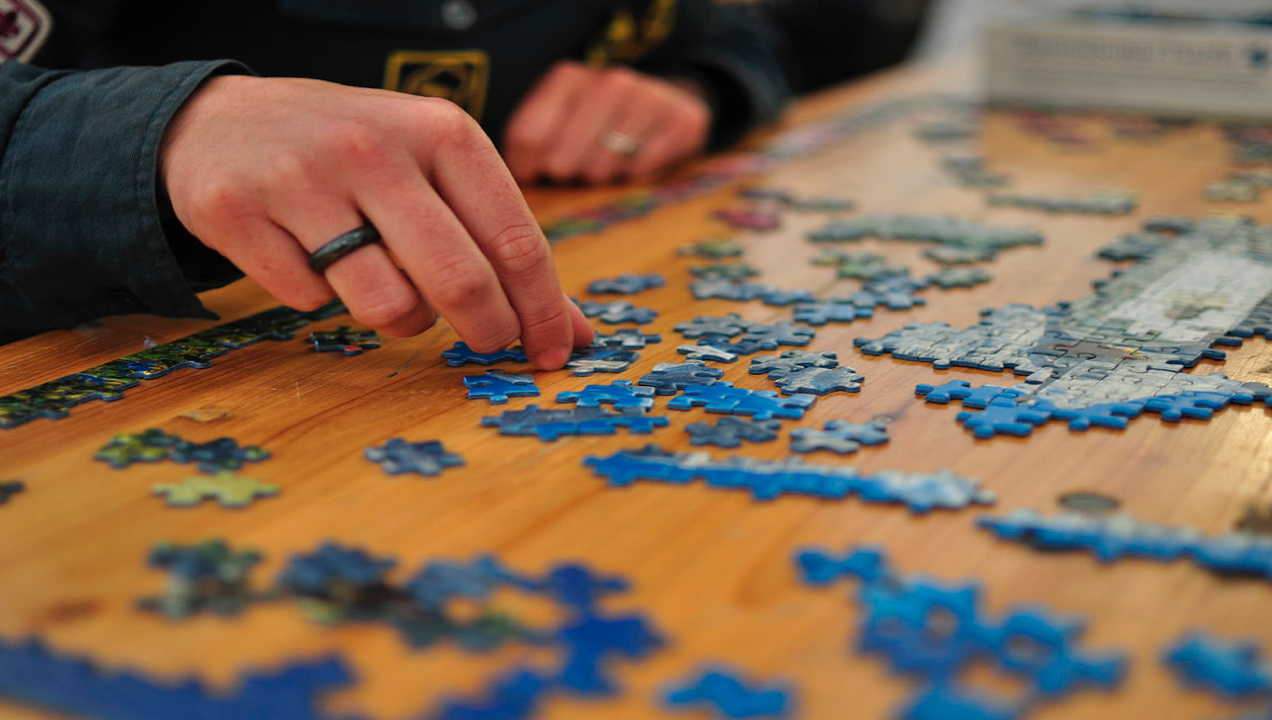 Sometimes, how you approach one problem is like how you approach an entirely different one.
Sometimes, how you approach one problem is like how you approach an entirely different one.
One of the better parts of the COVID-19 pandemic was discovering that I liked to do jigsaw puzzles—at least those 1,000 pieces or fewer; I do not have the talent or patience for anything larger or 3D.
But since life has picked up the pace again, I don’t attempt puzzles as often. Even when I have the time, I always find other ways to fill it, usually boring things like cleaning and paying bills. So, it was a rare treat to do a puzzle over the holidays.
If you’ll indulge me in listening to my puzzle process, I think you’ll find it may be like how you approach the challenge of improving workplace safety. I suspect we may also experience a similar emotional journey. If so, that presents opportunities to learn from one another. I’ll share my experiences. Feel free to write to me and share your own.
To be clear, I’m no expert. Still, I’ve developed some strategies for how I like to approach a fresh puzzle.
First, I take every single piece out of the box and sort each into one of my five puzzle trays. One is dedicated to the border. Three are arranged according to the prominent or primary color on a given piece. The last tray is a miscellaneous catchall.
Next, I assemble the border. The border is a sensible place to start because there the edge pieces are clearly marked. There may be some uncertainty about placement, but those edges themselves are unambiguous.
Once the border is established, I look for the next easiest pieces to assemble. In business, we call that focusing on the low-hanging fruit. This helps me build momentum and confidence. It also helps to eliminate some pieces before I attempt the more complex parts of a puzzle.
I have experimented with several puzzle techniques—some I learned from others and some I invented myself. Whether tried and true or something new, my objective remains the same: to keep going until I place the final piece.
Sometimes, I am lucky enough to pick up a piece and immediately find where it fits. Often, I must try 30-plus pieces until I get it. When I start to get frustrated, I purposefully change tactics to give myself a fresh perspective. It’s a balancing act, but I try to avoid getting stuck.
As more and more pieces snap together, the overall picture becomes easier to see. That’s key because when I’m toiling in the weeds, I can’t see anything bigger than the individual piece in front of me. It is all too easy to get hyper fixated and frustrated, especially when I feel like I’m not making any progress.
I often work puzzles while watching TV or listening to an audiobook. I start off by splitting my attention. At some point, my brain tunes out all other stimuli, and I enter a state of deep focus. Pausing to get a drink, use the restroom or stretch my hands before they spasm breaks the trance. I often find that taking breaks—or at least saying I will—often leads to discoveries and renews my efforts.
One aspect of the process that, well, puzzles me is that some pieces don’t look like they work. Yet, when you try them, you feel them click. I may be occasionally surprised, but I don’t question it; there are plenty of things in life that I can appreciate yet don’t fully understand. My job is to be patient, persistent and trust that if I keep putting in the work, eventually the pieces will come together.
When I’m done, I stand back and admire my work. It’s just a puzzle, not the cure for cancer or anything, but I still feel proud that I accomplished something that seemed daunting at times. After a few days, I disassemble the puzzle and put the box back on the shelf. Still, the feeling stays with me and helps propel me toward the next challenge, puzzle or otherwise.
I hope you can relate and maybe, just maybe, learn something from my experiences that helps you to carry on with your important, yet challenging, task of creating a safer workplace. Just remember to take it one piece at a time.
Bio:
Dr. Bill Pomfret of Safety Projects International Inc who has a training platform, said, “It’s important to clarify that deskless workers aren’t after any old training. Summoning teams to a white-walled room to digest endless slides no longer cuts it. Mobile learning is quickly becoming the most accessible way to get training out to those in the field or working remotely. For training to be a successful retention and recruitment tool, it needs to be an experience learner will enjoy and be in sync with today’s digital habits.”
Every relationship is a social contract between one or more people. Each person is responsible for the functioning of the team. In our society, the onus is on the leader. It is time that employees learnt to be responsible for their actions or inaction, as well. And this takes a leader to encourage them to work and behave at a higher level.
He can be reached at:
pomfretb@spi5star.com

